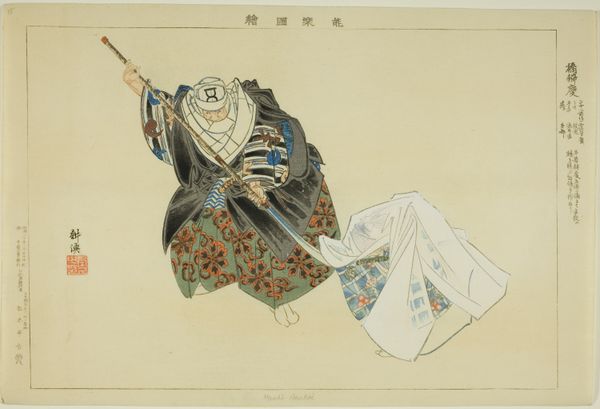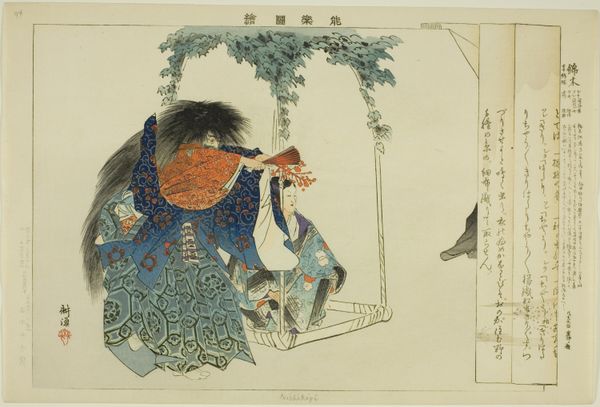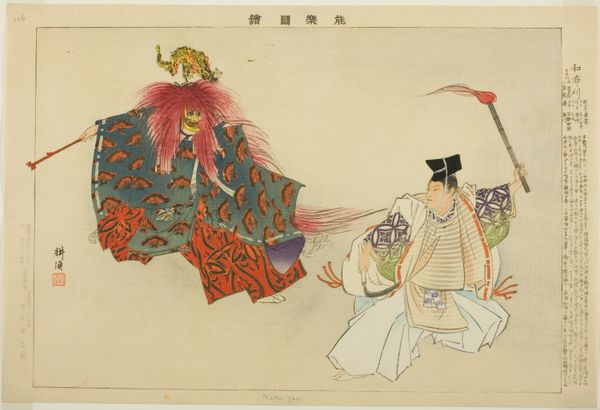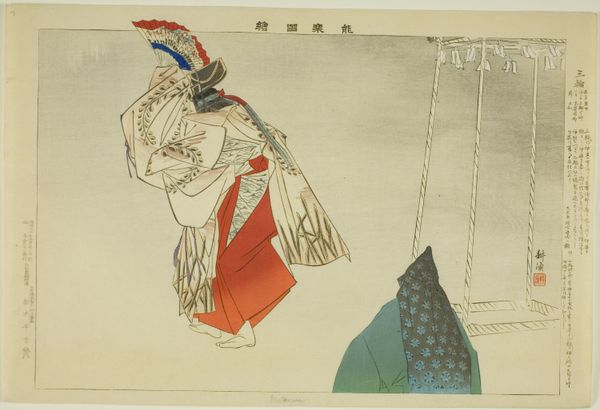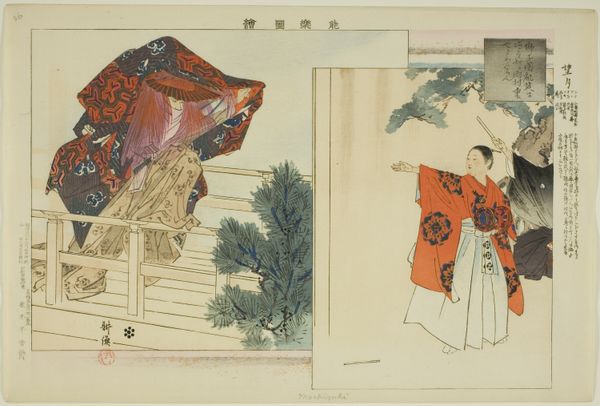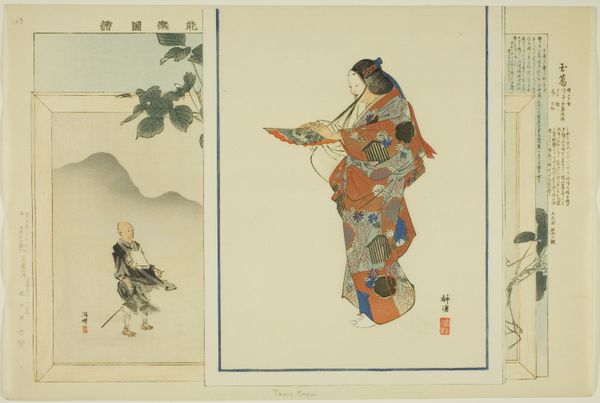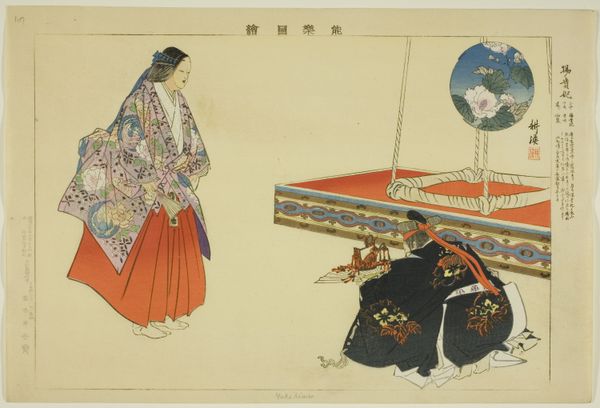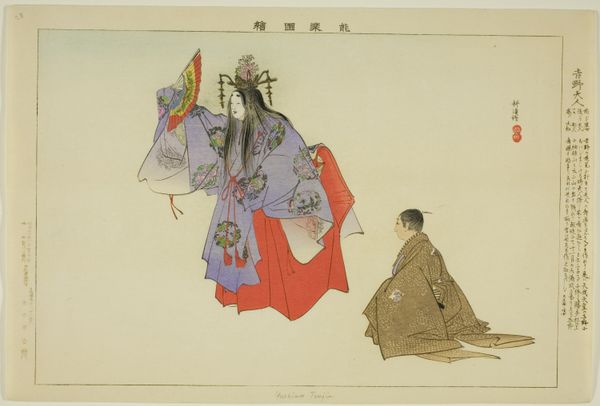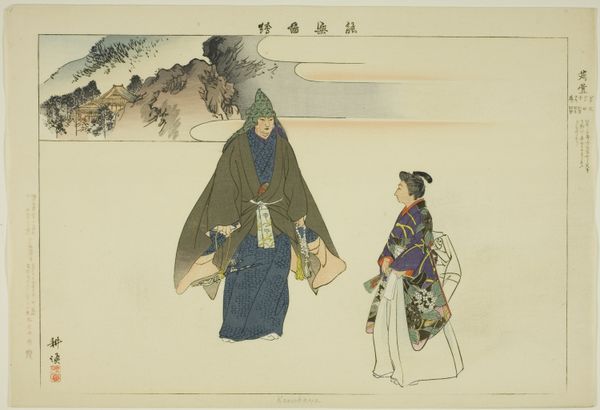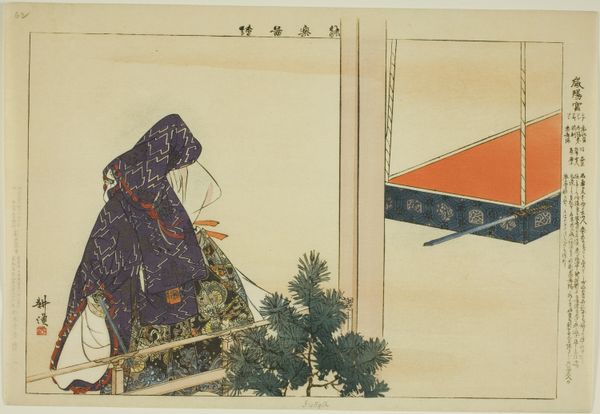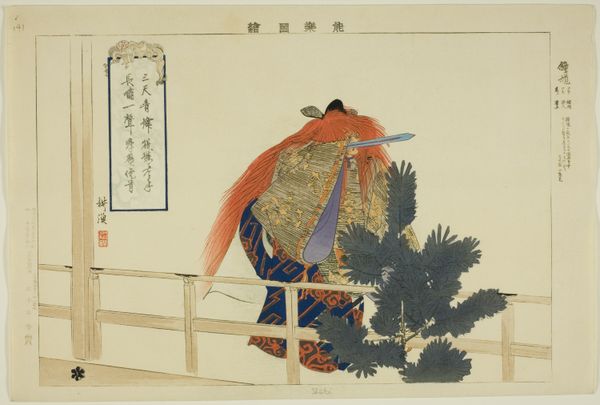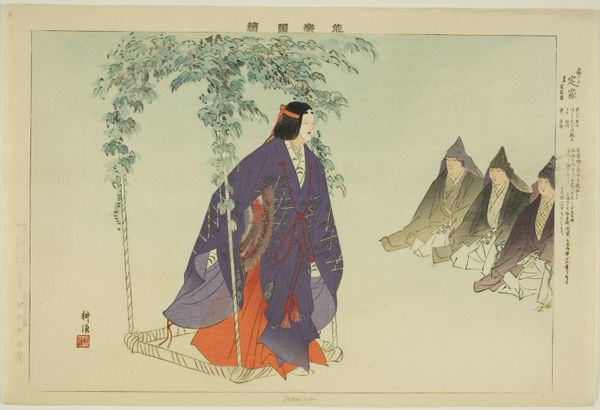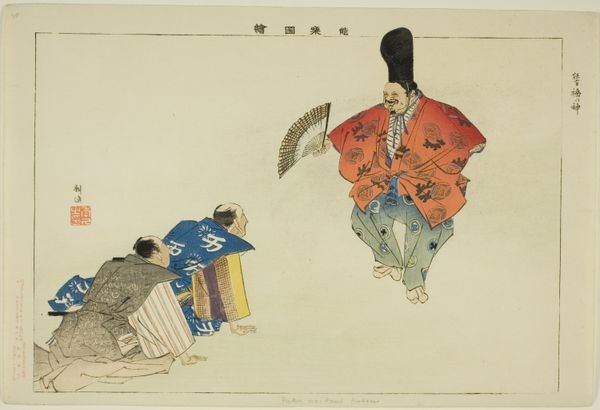
Yurimasa, from the series "Pictures of No Performances (Nogaku Zue)" 1898
0:00
0:00
Dimensions: Approx. 25.2 × 37.4 cm (10 × 14 4/3 in.)
Copyright: Public Domain
Editor: This is a woodblock print from 1898 by Tsukioka Kogyo, called "Yurimasa, from the series 'Pictures of No Performances.'" It's striking how the artist has used these almost stark blocks of colour, combined with detailed patterns. What story is being told here? Curator: A key element to understanding this piece is knowing that it's rooted in the tradition of "Nogaku Zue," which were visual records of Noh plays. These prints served a crucial role. Considering that access to Noh theatre was restricted, and primarily available to upper classes or specific circles, these prints helped circulate the narratives. How does knowing that impact how you see the work? Editor: It frames it in a new way! The print becomes more than just a piece of art. It's a method of sharing culture outside its usual audience. Curator: Precisely. Notice how the artist depicts the actor playing Yurimasa, in full costume, juxtaposed against the fan shapes depicting landscapes. This connects the drama to the historical narrative and landscapes linked to the original tale. Think about it this way: prints democratized access to the performative arts and allowed broader society to engage with the stories. It also raises questions about artistic license - How faithful were they to the actual stage performance? Editor: That’s so interesting. So it is less a portrait of the man playing the role, and more a preservation and interpretation of the *performance*. A captured moment for the masses! Curator: Exactly! It embodies the sociopolitical role that art served then. I would further ask whether prints like these elevated or possibly diluted the aura of original theatrical experience. Food for thought, eh? Editor: It completely changes how I see it. Before, I saw pretty colours and patterns. Now I recognize it as a fascinating piece of cultural history. Curator: Indeed! And how art acts as both a reflection and a shaper of public memory and accessibility.
Comments
No comments
Be the first to comment and join the conversation on the ultimate creative platform.
